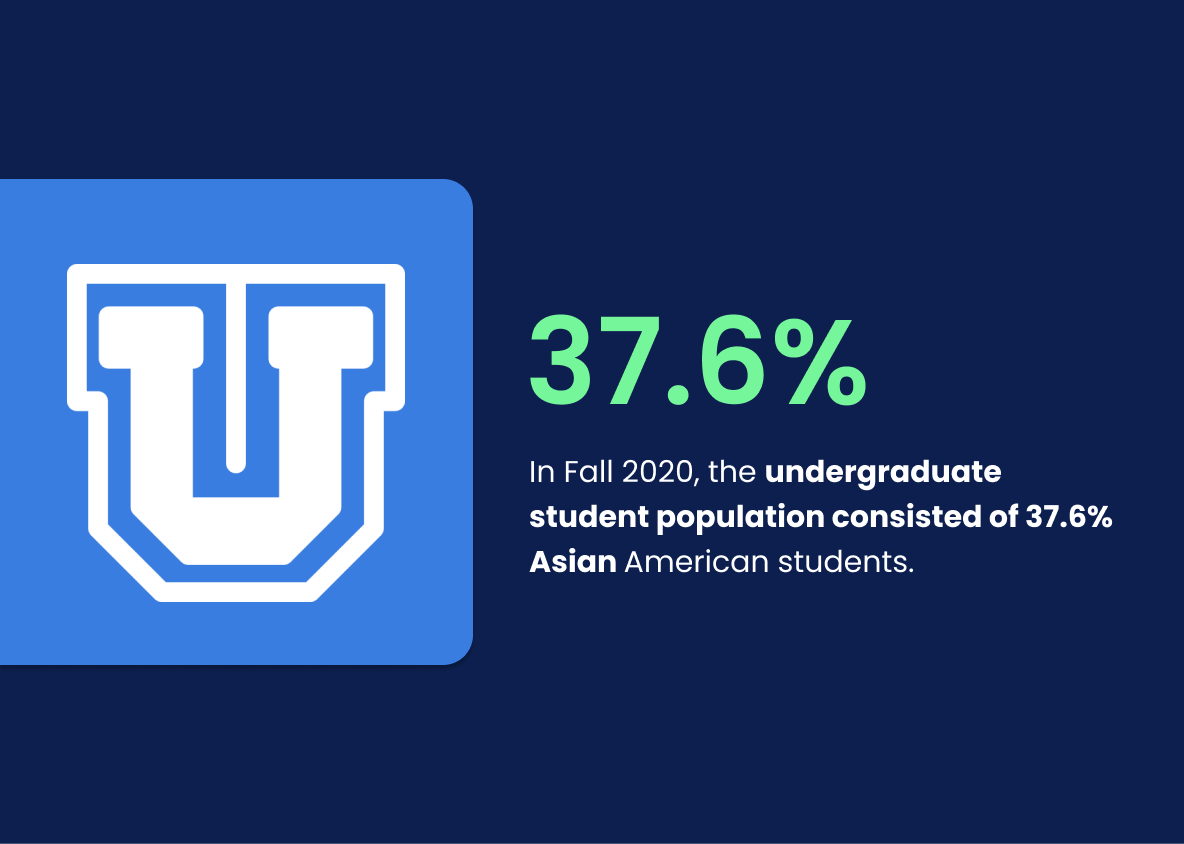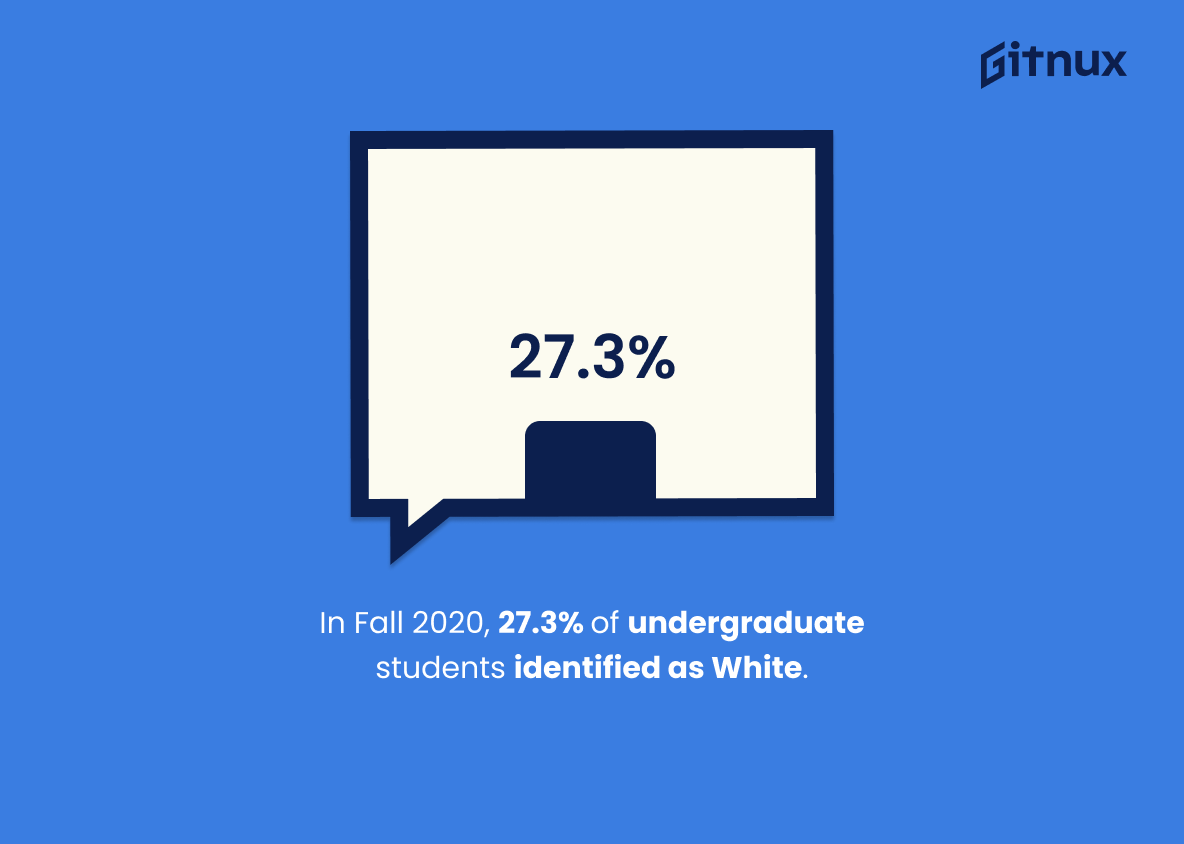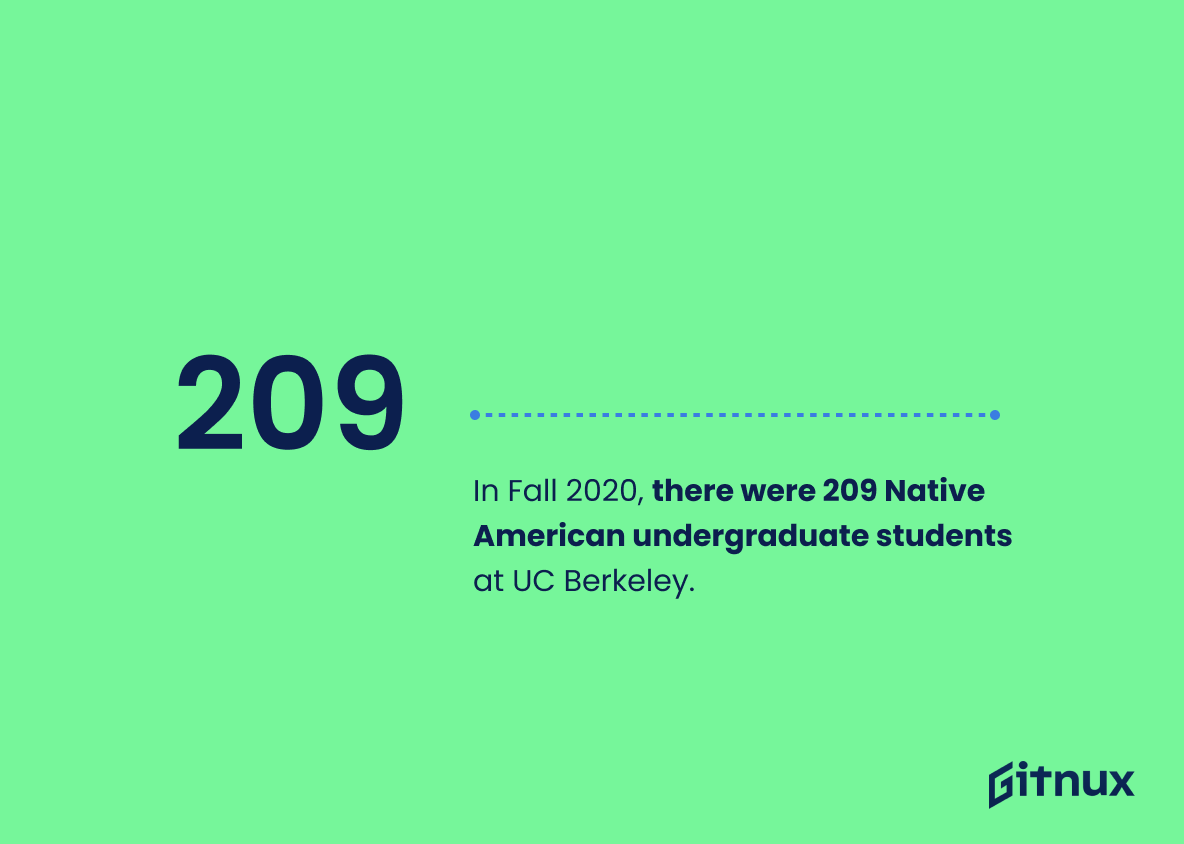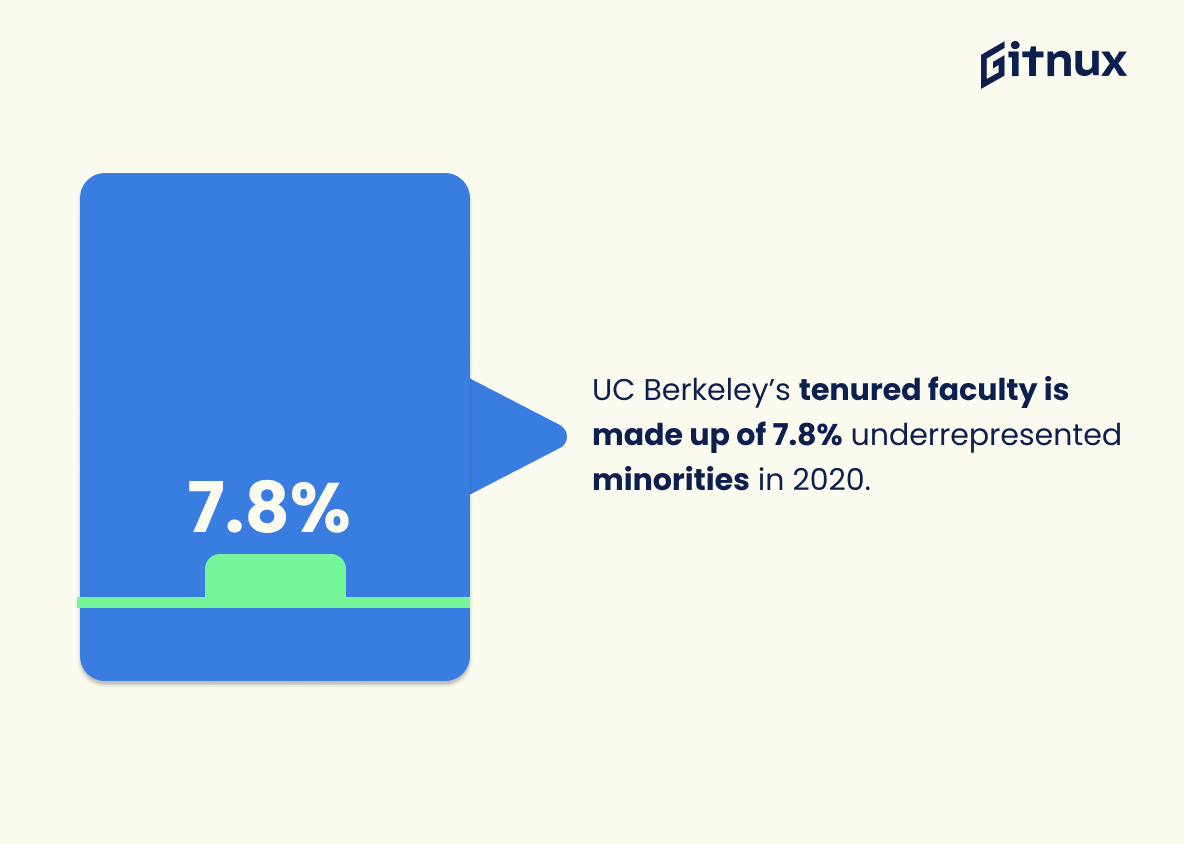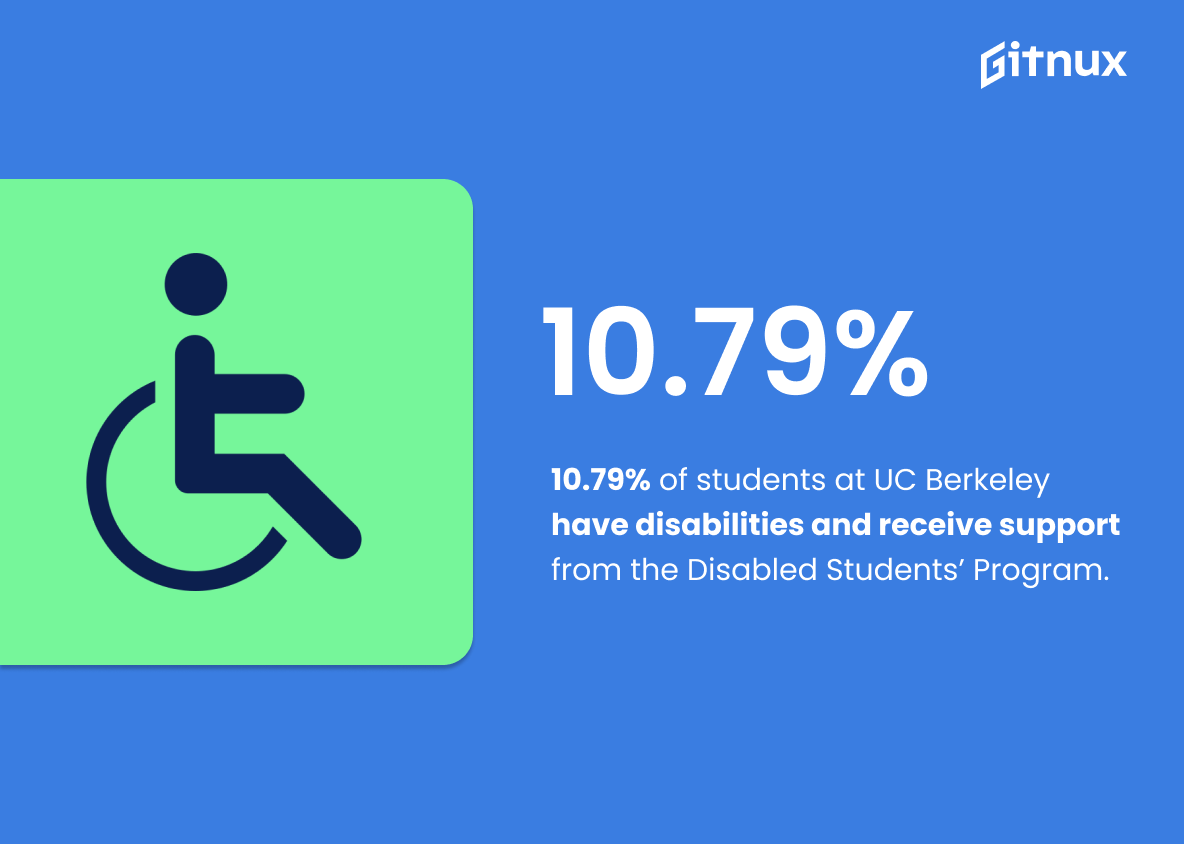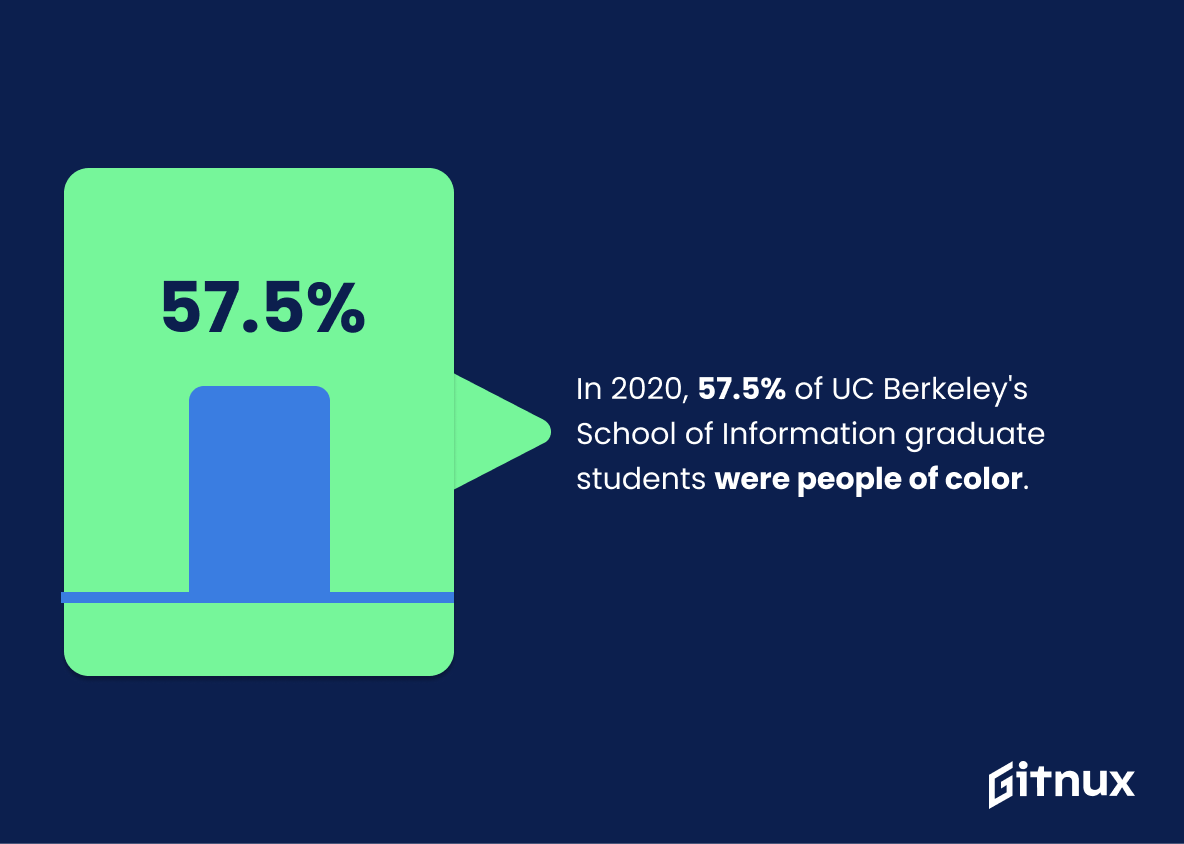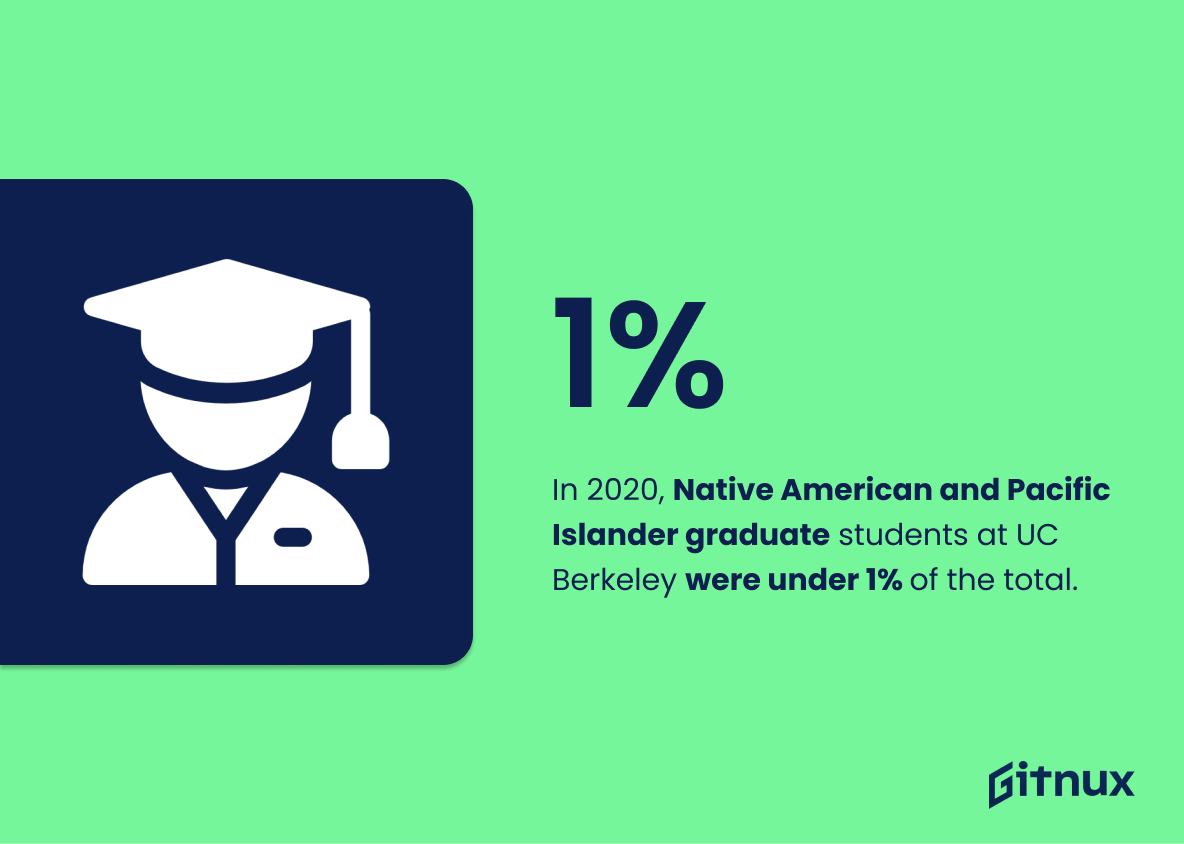UC Berkeley is a leader in diversity and inclusion, with an impressive range of statistics to back it up. From the 58% domestic students of color making UC Berkeley the most ethnically diverse public institution in California, to 19.6% underrepresented minorities (Hispanic, African American, and Native American) among undergraduate students; 37.6% Asian Americans; 27.3% White undergraduates; 209 Native American undergraduates; 31% first-generation college students among incoming freshmen for 2020; 7.8 % underrepresented minority faculty members in 2020 ; 26.8 % female faculty positions filled by women in 2019 ; 10 .79 % undergraduate student population receiving support from Disabled Students’ Program (DSP); $17 .3 million scholarships & grants provided for URM’s during 2019 -2020 academic year ; 600+ student organizations focusing on diversity including cultural , racial & religious groups etc., UC Berkeley has made significant strides towards creating a more equitable campus environment that celebrates its richly diverse community.
Uc Berkeley Diversity Statistics Overview
In Fall 2020, the undergraduate student population consisted of 37.6% Asian American students.
This statistic is a powerful indicator of the diversity of UC Berkeley’s undergraduate student population. It shows that Asian American students make up a significant portion of the student body, demonstrating the university’s commitment to creating an inclusive and equitable learning environment. Furthermore, this statistic highlights the importance of recognizing and celebrating the contributions of Asian American students to the university’s culture and academic success.
In Fall 2020, 27.3% of undergraduate students identified as White.
This statistic is a stark reminder of the need for greater diversity at UC Berkeley. It highlights the fact that the majority of undergraduate students are White, and that there is still much work to be done in order to create a more inclusive and equitable campus environment.
In Fall 2020, there were 209 Native American undergraduate students at UC Berkeley.
This statistic is a powerful reminder of the importance of Native American representation at UC Berkeley. It speaks to the university’s commitment to fostering an inclusive and diverse campus environment, and highlights the progress that has been made in recent years to ensure that Native American students have access to the same educational opportunities as their peers. By recognizing the presence of Native American students on campus, UC Berkeley is taking a step towards creating a more equitable and welcoming environment for all.
UC Berkeley’s tenured faculty is made up of 7.8% underrepresented minorities in 2020.
This statistic is a telling indication of the lack of diversity among UC Berkeley’s tenured faculty. It highlights the need for more equitable representation of underrepresented minorities in the faculty, and serves as a reminder of the work that needs to be done to ensure that all members of the UC Berkeley community are given the same opportunities and access to resources.
26.8% of UC Berkeley faculty positions were filled by women in 2019.
This statistic is a powerful indicator of the progress UC Berkeley has made in promoting gender diversity among its faculty. It shows that the university is taking steps to ensure that women are represented in its faculty, and that it is committed to creating an equitable and inclusive environment for all. This statistic is an important part of the larger picture of UC Berkeley’s commitment to diversity and inclusion, and it is a testament to the university’s dedication to creating a campus that is welcoming and supportive of all its members.
10.79% of undergraduate students at UC Berkeley have disabilities and receive support from the Disabled Students’ Program (DSP).
This statistic is a powerful reminder of the importance of the Disabled Students’ Program (DSP) at UC Berkeley. It highlights the fact that the university is committed to providing support and resources to students with disabilities, and that it is actively working to create an inclusive and accessible environment for all students. This statistic also serves as a reminder that diversity and inclusion are essential components of a successful university, and that UC Berkeley is dedicated to creating a campus that is welcoming and supportive of all students.
UC Berkeley provided $17.3 million in undergraduate scholarships and grants for underrepresented minority students in 2019-2020.
This statistic is a testament to UC Berkeley’s commitment to promoting diversity and inclusion on campus. It demonstrates that the university is taking tangible steps to ensure that underrepresented minority students have access to the same educational opportunities as their peers. By providing financial support, UC Berkeley is helping to level the playing field and create a more equitable learning environment.
UC Berkeley houses 600+ student organizations that focus on diversity, including cultural, racial, and religious groups.
This statistic speaks volumes about UC Berkeley’s commitment to fostering a diverse and inclusive environment. It demonstrates that the university is dedicated to providing students with the opportunity to explore and celebrate their unique backgrounds and identities. By having such a wide range of student organizations, UC Berkeley is creating a space where students can come together to learn, grow, and build meaningful relationships.
57.5% of UC Berkeley’s 2020 graduate student cohort at the School of Information were people of color.
This statistic is a powerful testament to the success of UC Berkeley’s commitment to diversity and inclusion. It demonstrates that the university is making strides towards creating a more equitable and inclusive environment for its graduate students. By having a majority of its graduate student cohort be people of color, UC Berkeley is sending a strong message that it values and respects the contributions of all its students, regardless of their background. This statistic is a positive sign that UC Berkeley is taking meaningful steps towards creating a more diverse and inclusive campus.
In Fall 2020, international students made up 14.4% of graduate students at UC Berkeley.
This statistic is a testament to UC Berkeley’s commitment to fostering a diverse and inclusive environment. It demonstrates that the university is actively working to create a campus that is welcoming to students from all backgrounds, including those from abroad. This is an important step in creating a campus culture that is open to different perspectives and experiences, which can only lead to a richer learning experience for all.
In 2020, the number of Native American and Pacific Islander graduate students at UC Berkeley was under 1% of the overall graduate student population.
This statistic is a stark reminder of the lack of representation of Native American and Pacific Islander graduate students at UC Berkeley. It highlights the need for more diversity and inclusion initiatives to ensure that all students have equal access to higher education. This statistic is a call to action for UC Berkeley to take steps to increase the number of Native American and Pacific Islander graduate students and create a more equitable and diverse campus.
In 2020, 34% of UC Berkeley’s incoming students identified as Asian American or Pacific Islander, and 17% identified as African American or Latino.
This statistic is a powerful reminder of the importance of diversity in the UC Berkeley student body. It highlights the fact that the university is committed to creating an inclusive and equitable learning environment for all students, regardless of their racial or ethnic background. This statistic also serves as a reminder that UC Berkeley is actively working to create a campus culture that celebrates and values the unique perspectives and experiences of all its students.
Conclusion
UC Berkeley is committed to creating a diverse and inclusive campus community. The university has made significant progress in recent years, with the student population now consisting of 58% domestic students of color, 19.6% underrepresented minorities (Hispanic, African American, and Native American), 37.6% Asian Americans, 27.3% White students; 209 Native American undergraduate students; 31% first-generation college students; 7.8 % underrepresented minority faculty members; 26.8 % female faculty members; 10 .79 % disabled undergraduates receiving support from DSP ; $17 .3 million in scholarships for underrepresented minority undergraduates ; 600+ diversity focused student organizations , 14th rank nationally for ethnic diversity among liberal arts colleges , 57 .5 percent people of color graduate cohort at School Of Information ,14 .4 percent international graduate student enrollment rate , 42 percent low income or coming from low income families identification rate amongst undergraduates as well as 47 & 65 percentage increase respectively since 2014 in African American & Chicanx/Latinx undergraduate enrollments alongwith 5300 enrolled into UC Berkeley’s transition program known as ‘Berkeley Connect’ which links newbies with experienced mentors are all indicative that UC Berkeley is making great strides towards achieving its goal of fostering an equitable learning environment where everyone feels welcome and respected regardless their background or identity
References
0. – https://www.lead.berkeley.edu
1. – https://www.senate.universityofcalifornia.edu
2. – https://www.data.berkeley.edu
3. – https://www.ucannualwage.ucop.edu
4. – https://www.diversity.berkeley.edu
5. – https://www.dsp.berkeley.edu
6. – https://www.ischool.berkeley.edu
7. – https://www.financialaid.berkeley.edu
8. – https://www.opa.berkeley.edu
